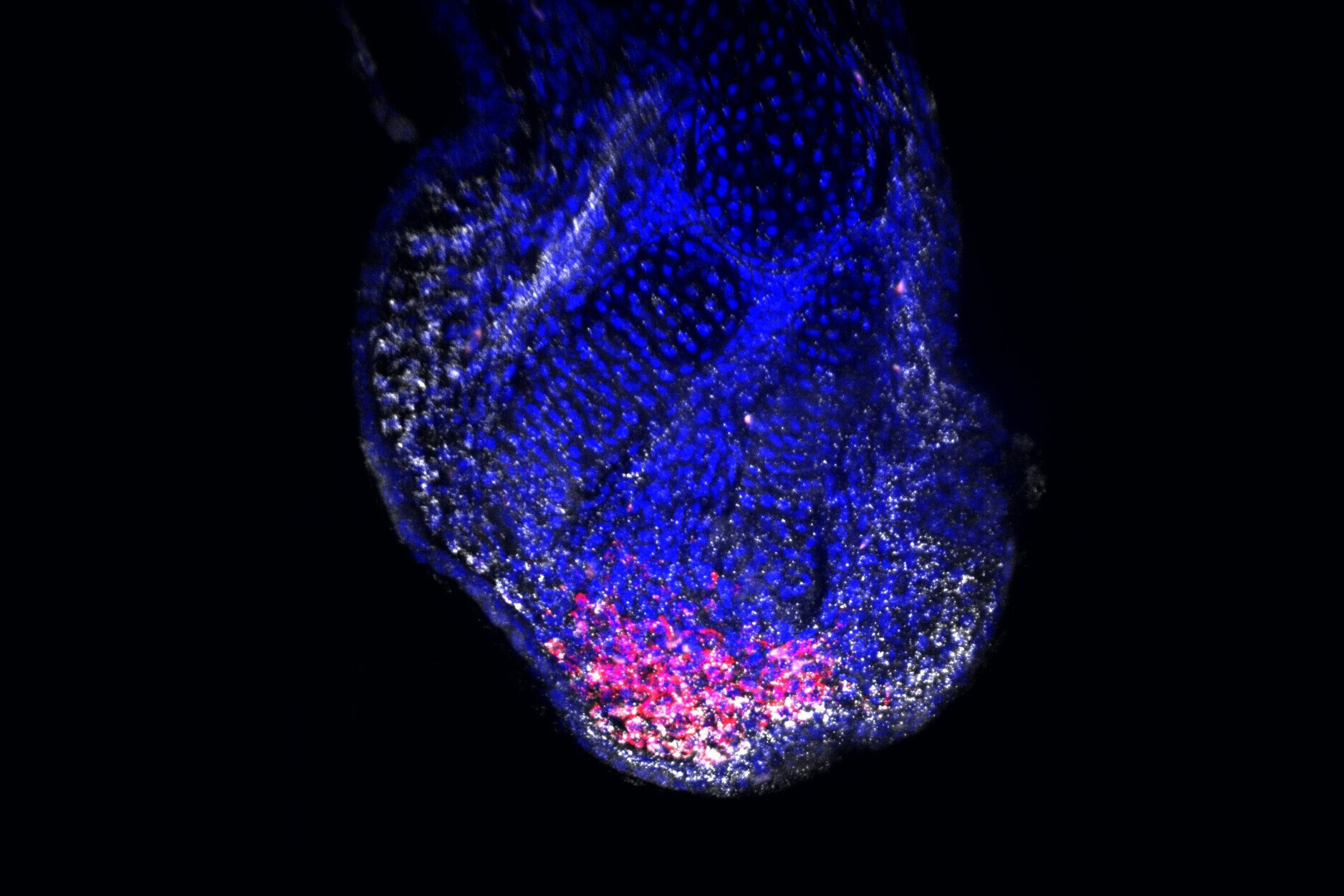Undergraduate student fits one more piece to the regeneration puzzle
Giacomo Glotzer, an undergraduate student from Yale University, spent a year in the lab of Elly Tanaka to investigate the molecular pathways that promote regeneration in the axolotl limb, supervised by PhD student Pietro Tardivo. Together, they report in the journal eLife that the unusual activity of a well-known signalling pathway promotes the production of an important molecule for limb regeneration. Giacomo tells us more about his experience.
You and Pietro ran the project from beginning to end. How did it start?
The number one source of inspiration for this project is the unique expression of a signalling molecule called Fibroblast Growth Factor 8, or Fgf8, in the axolotl. When a vertebrate embryo starts growing limbs, FGF8 is usually produced in a patch of cells in the epidermis at the tip of the limb bud, where it promotes the normal growth of the limb. What’s unusual in the axolotl is that FGF8 is not expressed in the epidermis, but in another tissue, the mesenchyme, on the anterior side of the limb bud and regenerating blastema. Fgf8 is thought to be essential for limb regeneration, hence our interest in understanding what regulates its expression.
And what did you find?
Studies in chick and mouse have shown that the epidermal expression of Fgf8 is regulated by a signalling molecule called Wnt and by a set of transcriptional regulators, all expressed in the epidermis. We were surprised to find that these factors are all present in the axolotl epidermis, where Fgf8 is absent. We then discovered that the Canonical Wnt signalling pathway maintains Fgf8 expression in the blastema mesenchyme. Though the Canonical Wnt molecule is still expressed in the epidermis, its downstream targets are expressed mostly in the mesenchyme, meaning there is a shift in Wnt responsiveness from the epidermis to the mesenchyme. This location shift may explain why Fgf8’s expression is different in the axolotl and could be linked to the axolotl’s extraordinary regenerative abilities.

How did you end up coming to the IMP for this project?
In 2020, I was finishing the second year of my undergraduate studies at Yale University in the US. I applied to the Vienna BioCenter Summer School to work with Elly Tanaka and I got in, but then I received this very disappointing email informing me that the Summer School was cancelled because of the pandemic. At this point I stumbled upon the scholarships from the Austrian Marshall Plan Foundation, which promotes student exchanges between Austria and the US. It was way past the application deadline, but the foundation still encouraged me to apply, probably because my US-Polish dual citizenship would allow me to travel to Austria despite the ongoing pandemic. After submitting a proposal, they awarded me a generous grant, and I stayed in Elly’s lab for a year.
Publishing your results in a peer-reviewed journal after such a short time is impressive for someone with little practical experience. How did that happen?
I think the reason why this project worked out is because Pietro pushed me to take this project very seriously. He was the first person I met when I arrived, and I had zero research experience, so he taught me all the basic lab techniques – how to pipette, how to image, how to care for the animals, and so on. After I had learned these basics, he didn’t ask me to contribute to his PhD project, but instead gave me my own independent project, and that gave me a sense of ownership that undergraduate students rarely have. It was a whole lot of work, but we made a good team and enjoyed working together. Elly’s lab is a tightknit community that adopted me, a student living alone in a foreign country, into their little family of axolotl enthusiasts. I really can’t thank Elly, Pietro, or the other lab members enough.
What are you going to do next?
I will soon be doing research in a cognitive behaviour lab in New Haven, doing computational modelling of music cognition in humans. This might turn into my senior capstone project – the American equivalent to a bachelor’s thesis. I really enjoyed my stay in Austria and would like to connect to my roots, so I think that after that I’ll apply to PhD programmes in Europe, and a few in the US as well.
Original Publication
Giacomo L. Glotzer, Pietro Tardivo, Elly M. Tanaka: “Canonical Wnt Signaling and the Regulation of Divergent Mesenchymal Fgf8 expressionin Axolotl Limb Development and Regeneration”. eLife (2022). DOI: 10.7554/eLife.79762
Further reading
